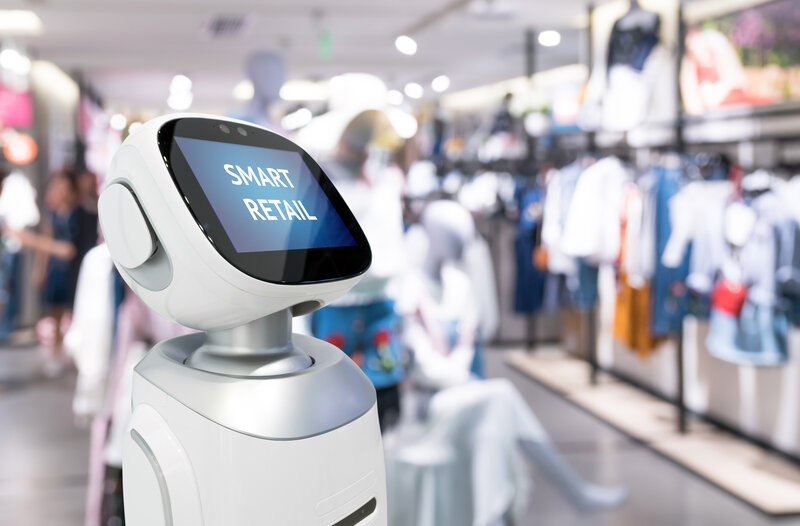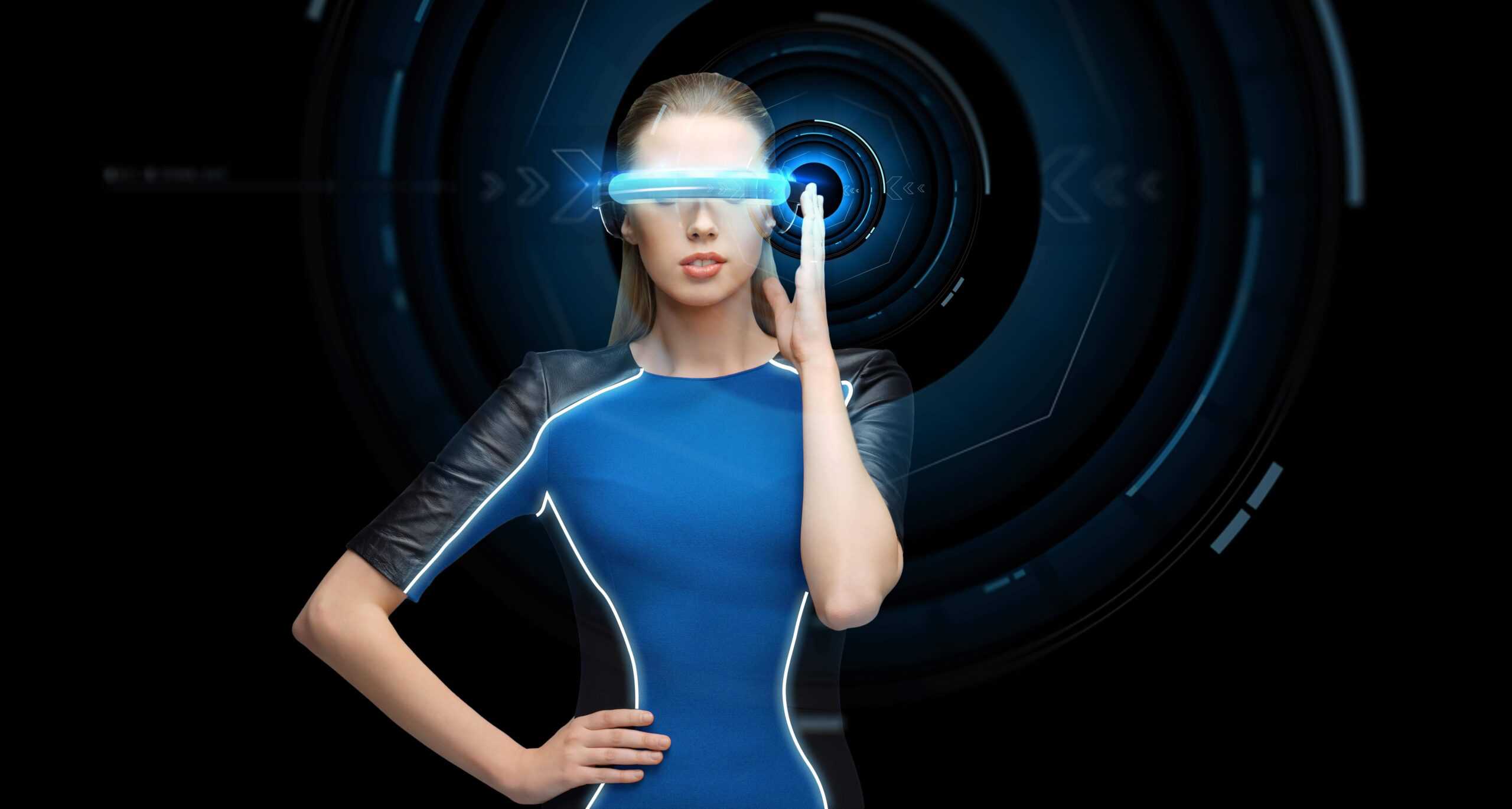Smart algorithms and robotics technology are transforming every part of the retail chain, from manufacturing to managing warehouses to delivery.
The retail sector is undergoing a major transformation fuelled by new technological breakthroughs and ever-growing customer expectations. The rise of e-commerce has dramatically changed the way we purchase things, and many retailers are struggling to meet high expectations in terms of the excellent offer and ultra-fast delivery. As traditional retail techniques are slowly being abandoned in the modern data-driven world, retailers turn to cutting-edge technologies to remain relevant.
Retail has become a highly-competitive battlefield, and retailers are increasingly turning to emerging technologies such as artificial intelligence (AI) and robotics to win over new and retain the loyalty of the existing customers. A recent report shows that a global retailer spending on AI is predicted to reach $19.9 billion by 2027, growing at a compound annual growth rate of 34.4 per cent from 2020. When it comes to robotics and automation, it’s estimated that the global robotics market is poised to grow at a compound annual growth rate of 28.51 per cent to reach $181.02 billion by 2024. One of the major factors that contribute to the robotics market growth is the increased demand for retail robots. Smart algorithms and automation drive the retail transformation, providing a wide variety of applications in the sector and transforming the retail chain.
Intelligent algorithms are used to improve manufacturing process
Artificial intelligence can be used to help retailers better understand their customers, identify emerging trends, and enhance the creative design process. This is especially visible in the fashion industry that has always been proactive and forward-oriented when it comes to trying out new technologies. The prime example is a cutting-edge HUGO BOSS smart factory in Izmir, Turkey. Besides relying on immersive technologies such as VR and AR, HB Izmir also works on AI-based projects to improve their process flow.
“We collect too many attributes about a product including machines, people and processes to make it happen. Our AI tool looks back at all the defects that have occurred in the past in all SKUs we have worked on, and identifies who was responsible for those defects, in which lines these defects occurred and when these occurred. This process comes up with a prediction of defects in any ongoing project and helps us to take a call way in advance,” explains Erkut Ekinci, Head of IT.
Using AI to guide the manufacturing process may lead some to suggest that human input could soon become obsolete, but this isn’t likely to happen anytime soon. Rather than replacing them altogether, AI should be used to help designers and workers do their job more efficiently by reducing lead times. To achieve this, the factory implemented ‘Oxygen’ project where the workers’ “historical data and defining a trend of their emotions” is captured and analysed in order to identify low performers. Actionable data is then used to help workers’ improve their performance. “It’s not at all easy to capture human emotions, but we are satisfied with the results,” underlines Erkut. Given the results, this could be a sign of things to come, and it wouldn’t be at all surprising to see other companies follow suit and incorporate smart algorithms and machine learning into their manufacturing processes as well.
AI helps manufacturers and retailers manage their inventories and anticipate demand
One of the biggest challenges for retailers is to keep track of which items are on the shelves and identifying those that need restocking. This can be both time consuming and a costly endeavor. Thankfully, robotic technology can also be used to help retailers manage their inventory. One of the companies that leverages cutting-edge tech is REI, an American retail and outdoor recreation services corporation. The company relies on IBM’s Order Optimizer tool to improve its supply chain. Since the implementation of the system, the company has managed to increase sales.
Rick Bingle, senior vice president of supply chain at outdoor gear and apparel retailer RE, noted that the company’s “sales increased $100 million in the first year of using the IBM Order Management tool by tapping into this previously unseen store inventory”. “We calculated that we were saying, ‘No’ 800,000 times every year because we weren’t accessing the inventory in the stores itself.”
It’s not enough just that the shelves are kept stocked. It’s crucial that they are stocked with items people want to buy, which is important amid the Coronavirus outbreak. An American Artificial intelligence company Simporter recently launched new software that predicts which items will be in demand before they run out of stock. Dubbed the Epidemic Demand Surge Protector, the system helps manufacturers and retailers keep up their supply levels for the most necessary items such as food, medicines, and staple household items.
“People’s lives are turned upside down from COVID-19. We created this software to help,” emphasised Dillon Hall, Simporter’s co-founder. “If used effectively, we can ensure millions of people get the supplies they need from their local stores to minimize shopping trips and reduce risks of community transmission.”
VR models are ‘stepping’ on the catwalk: the future of the runway
Several stages of the apparel manufacturing process have already undergone automation, and soon will see robots on the catwalk, replacing human models. Though we’ll still enjoy watching human models wearing a new collection, future-oriented designers have already started experimenting with virtual models. This means that amid COVID-19 outbreak, fashion designers can display their work to the public. Take a look at a young designer Anifa Mvuemba, who used virtual models to present her Hanifa collection in 3-D. This novelty in the fashion world could help young designers showcase their work without breaking the bank. This doesn’t mean that robots and virtual models will completely replace human models.
“I think there’s always going to be an interest in human beings and their lives, and evolution of their careers, but that’s something the girls are watching,” points out Sara Ziff, the founder and executive director of the Model Alliance, “referring to virtual models replacing real ones”. But there are those who believe that digital supermodels are here to stay. “The avatars are here to stay. There is also the power of expressing new ideas in novel ways. Move over, wizards and superheroes! The next fashion generation is speaking itself into existence virtually,” writes Stephan Rabimov for Forbes.
Cutting-edge tech is tailoring the future of the retail industry
The retail industry is changing rapidly and not without a reason. The rise of e-commerce, which offered customers unprecedented speed and convenience, has also had an immense impact on shoppers’ expectations in terms of purchasing experience and delivery. As a result, retailers have been forced to abandon traditional ways of conducting business and handling their supply chain by adopting emerging technologies such as smart algorithms and robotics, allowing improved shopping experience even during crises. Whether they’re used to enhance the design and manufacturing process, manage inventory, anticipate future demand, state-of-the-art tech are set to play an even more prominent role in the retail sector in years to come, revolutionising every part of the retail chain in the process.




